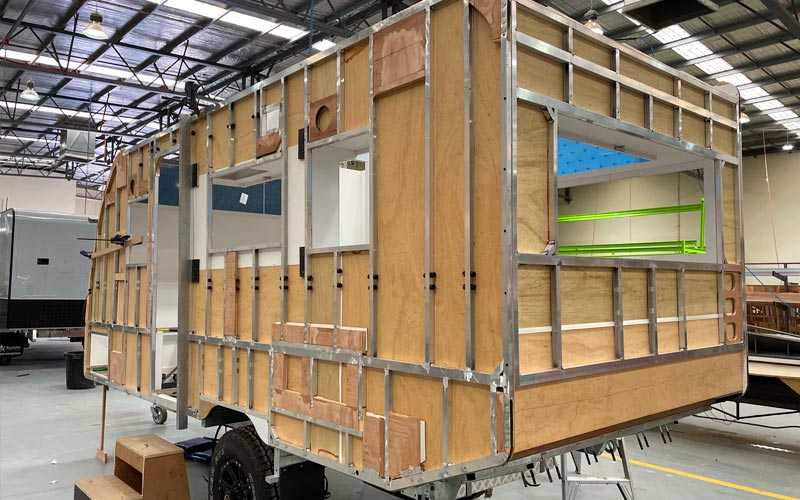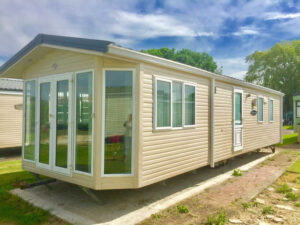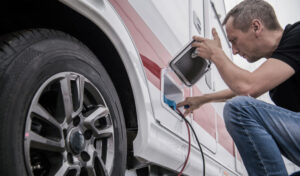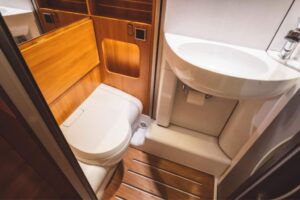Introduction
Brief history of caravans:
Caravans have a rich history that dates back centuries. Originally, they were used by nomadic tribes as a means of shelter during their travels. Over time, these mobile homes evolved from simple tents mounted on carts to the sophisticated recreational vehicles we see today. The term “caravan” itself is derived from the Persian word “karwan,” which refers to a group of desert travelers.
The evolution of caravan design and manufacturing:
As the demand for leisure travel grew, so did the need for comfortable and efficient caravans. Innovations in design and manufacturing techniques have transformed what were once basic shelters into luxurious homes on wheels. Modern caravans are equipped with all the amenities of a stationary home, reflecting the advancements in technology and changing consumer preferences.
Materials Used in Caravan Construction
Types of materials:
Caravans are constructed using a variety of materials, each chosen for its specific properties. Metals like steel and aluminum form the structural framework, while plastics, woods, and textiles are used for interiors and finishing. The choice of materials plays a crucial role in the caravan’s durability, weight, and overall aesthetics.
Sustainability and environmental considerations:
With growing awareness about environmental issues, caravan manufacturers are increasingly focusing on sustainable materials and practices. This includes using recycled or renewable resources, reducing waste during production, and designing caravans that are energy efficient. The aim is to minimize the environmental footprint while ensuring the longevity and quality of the caravan.
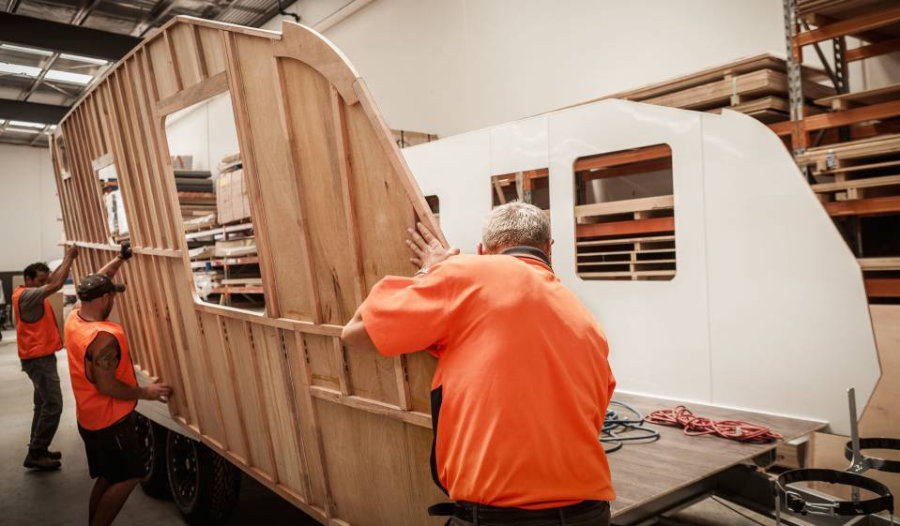
Caravan Design and Planning
The importance of aerodynamics:
Aerodynamics plays a pivotal role in caravan design. A well-designed aerodynamic shape reduces drag, which in turn improves fuel efficiency when the caravan is towed. This not only saves on fuel costs but also reduces the carbon footprint of caravan travel.
Interior space optimization:
Given the limited space inside a caravan, optimizing its interior is crucial. Designers focus on creating multifunctional spaces that can serve multiple purposes. For instance, a seating area might transform into a bed at night. Efficient space utilization ensures that travelers have all the comforts of home, even in a compact space.
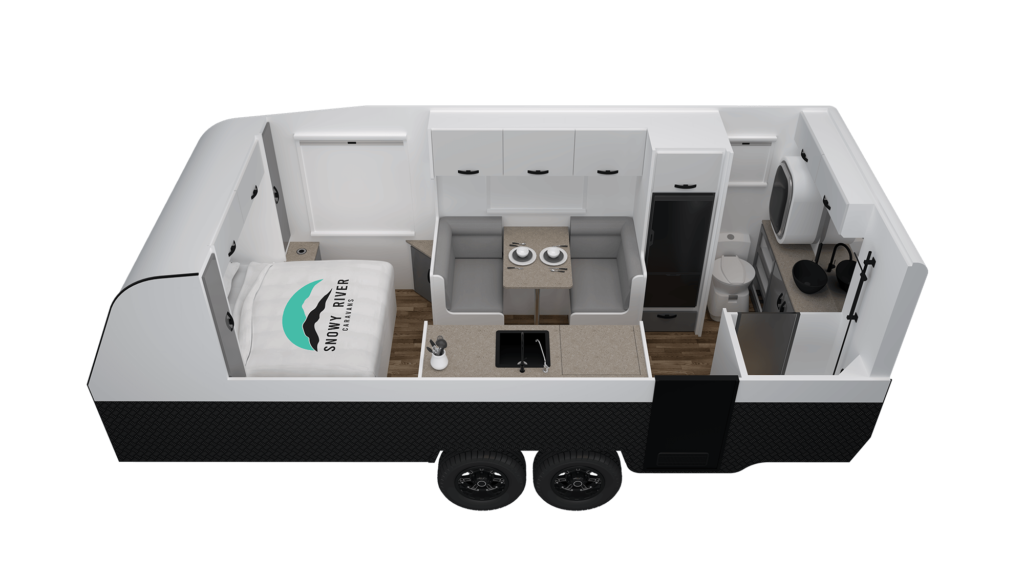
Chassis and Framework
Types of chassis:
The chassis is the backbone of any caravan, providing the necessary support and structure. Typically, chassis are made of steel or aluminum. Steel is known for its strength and durability, while aluminum is lighter and resistant to rust. The choice of chassis material can influence the caravan’s weight, cost, and longevity.
The role of the chassis in overall stability and safety:
A robust chassis ensures that the caravan remains stable, especially when being towed at high speeds or on uneven terrains. It also plays a vital role in the safety of the occupants, providing a sturdy base that protects against external impacts.
Walls, Roof, and Floor Construction
Insulation and weatherproofing:
Caravan wall construction is crucial for the comfort of its occupants. Walls, roofs, and floors are typically constructed with insulation materials to regulate the internal temperature. This insulation ensures that the caravan remains warm during cold weather and cool during hot weather. Additionally, weatherproofing measures are taken to prevent leaks and protect against external elements.
The role of materials in temperature regulation:
When pondering “what are caravans made of?”, one must consider the materials used in their construction. Materials like polystyrene and fiberglass are commonly used in caravan walls and roofs due to their excellent insulation properties. These materials help in maintaining a consistent internal temperature, ensuring that occupants remain comfortable regardless of external weather conditions.
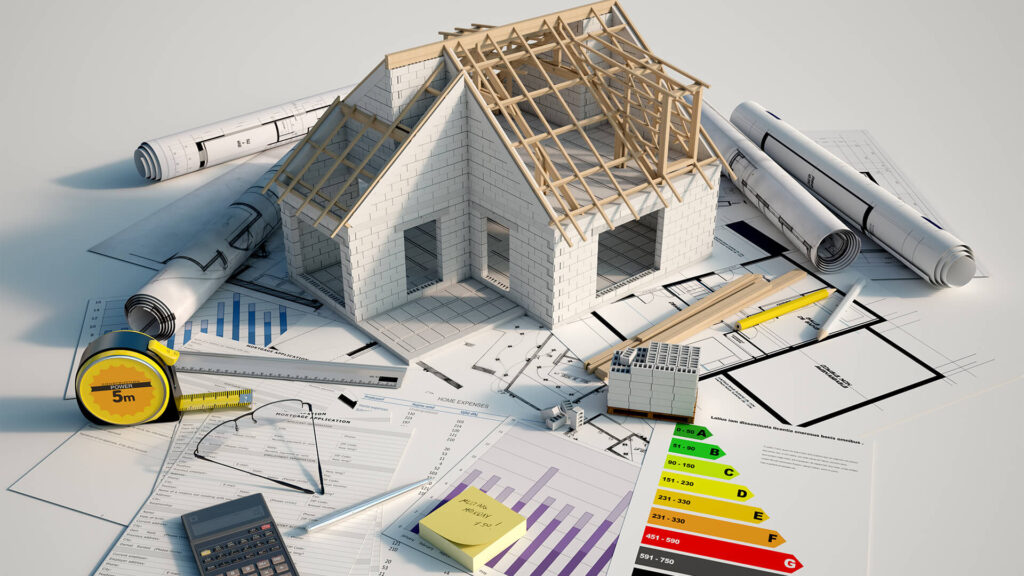
Windows and Doors
Types of caravan windows:
Caravans come equipped with various types of windows, each designed to serve specific purposes. Fixed windows are non-movable and provide a constant view outside. Sliding windows can be opened for ventilation, while hopper windows tilt inward, offering both security and airflow. The choice of window type often depends on the caravan’s design and the preferences of its occupants.
Security features in doors and windows:
Given the mobile nature of caravans, security is paramount. Modern caravans are fitted with reinforced doors and windows to deter potential break-ins. Locking mechanisms, security grilles, and even alarm systems are integrated to ensure the safety of the occupants and their belongings.
Interior Fittings and Furnishings
Designing for comfort and functionality:
The interiors of a caravan, while compact, are designed to maximize comfort and functionality. Space-saving furniture, ergonomic designs, and smart storage solutions are employed to make the most of the available space. When considering “what are caravans made of?”, the interior fittings and furnishings play a significant role in defining the caravan’s ambiance and usability.
The role of weight in interior design choices:
Weight is a crucial factor in caravan design. Every added amenity or furnishing impacts the overall weight, which in turn affects fuel efficiency and the ease of towing. Manufacturers often opt for lightweight materials and designs to ensure that the caravan remains within permissible weight limits without compromising on comfort.

Electrical and Plumbing Systems
Wiring and power sources:
Modern caravans are equipped with sophisticated electrical systems to power appliances, lighting, and other amenities. These systems can be powered by mains electricity when parked at a campsite, or by solar panels and batteries when on the move. Proper wiring ensures safety and efficient energy distribution throughout the caravan.
Water storage and waste management:
Plumbing systems in caravans are designed to provide fresh water for drinking, cooking, and bathing, while also managing wastewater. Storage tanks are installed to hold fresh water, and separate tanks collect gray and black water. Efficient waste management systems ensure that the caravan remains hygienic and environmentally friendly.
Safety Features
Fire safety:
Safety is paramount in caravan design. Fire safety measures, including smoke alarms, fire extinguishers, and fire blankets, are standard in most caravans. Escape routes and emergency windows are also incorporated to ensure quick evacuation in case of a fire.
Gas safety:
Many caravans use gas for cooking and heating. Proper storage, ventilation, and gas leak detectors are essential components of caravan design to prevent potential hazards. Regular inspections and maintenance of gas systems are recommended to ensure the safety of caravan occupants.
Quality Control and Testing
The importance of testing for roadworthiness:
Before a caravan hits the road, it undergoes rigorous testing to ensure it’s roadworthy. This includes checking the stability when towed, brake efficiency, and overall structural integrity. Ensuring a caravan is roadworthy not only guarantees the safety of its occupants but also of other road users.
Weather resistance and durability tests:
Given that caravans are exposed to various weather conditions, they are tested for resistance against rain, snow, wind, and UV rays. These tests ascertain the durability of materials used in caravan wall construction and other parts, ensuring that the caravan remains in optimal condition for years.

Conclusion
Caravans, often seen as symbols of freedom and adventure, have evolved significantly over the years, both in design and functionality. From their historical roots as simple shelters for nomadic tribes to the modern, technologically advanced homes on wheels, the journey of caravans is a testament to human ingenuity and the desire for exploration. A deep dive into “what are caravans” reveals a complex interplay of design, materials, and engineering. The meticulous attention to detail in caravan wall construction, the choice of materials answering the question of “what are caravans made of”, and the integration of advanced safety and comfort features showcase the industry’s commitment to delivering quality and value to consumers. As we look to the future, it’s evident that caravans will continue to adapt, incorporating sustainable materials and practices, and harnessing technological advancements to enhance the caravaning experience. Whether you’re a seasoned traveler or someone considering their first caravan adventure, understanding the intricacies of caravan manufacturing offers a newfound appreciation for these remarkable mobile homes.
